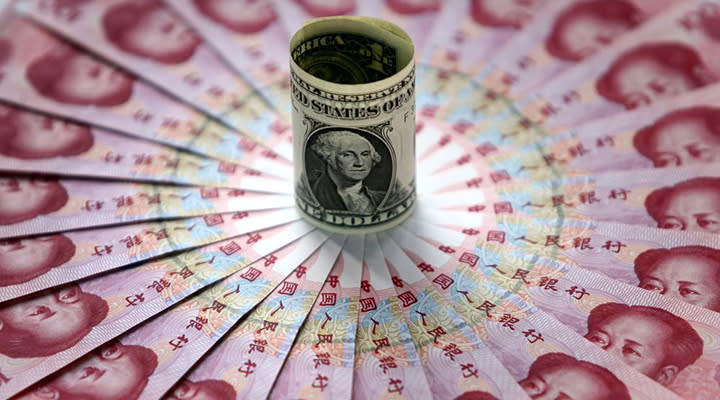3 things you need to know about the rise of China's renminbi as the world's reserve currency

SINGAPORE (July 12): Some 75 years ago, the Bretton Woods agreement was signed, making the US dollar the world’s reserve currency. But now, there is talk of an alternative: China’s renminbi.
“The economic strength of the West is weakening,” says James Wolfensohn, a former president of the World Bank and current co-chair of the Bretton Woods committee.
In a report launched on July 4 in commemoration of the 75th anniversary of the Bretton Woods system, Wolfensohn says China – already the world’s second-largest economy – will be one of the emerging nations that will “demand a leading position in the organisation of the international community.”
The Middle Kingdom has opened up its economy in the wake of the 2008 Global Financial Crisis. And the renminbi has already made its way into the International Monetary Fund’s Special Drawings Rights (IMF SDR) basket of currencies.
While experts and market watchers that spoke to The Edge Singapore have mixed views on this, here are three things to note about the global reserve currency and the rise of China.
1. The world dances to your beat
The implication of being the global reserve currency, in the words of Kay Van-Petersen, global macro strategist at Saxo Capital, is that “the world dances to your beat”.
For this reason, countries, corporations and investors have been at the mercy of the US’ financial and political decisions. And the hegemonic position of the US dollar has also allowed it to export some of its problems to other countries.
Most notably, what started out as defaults in the US subprime mortgage market developed into a full-blown global credit crunch.
Developing markets could not stomach the reduced foreign investment, trade and remittances and faced growing trade deficits, currency devaluations, increased debt and higher rates of inflation.
By end-2010, such economies had lost an estimated US$2.6 trillion ($3.5 trillion) in output, a report by the UK’s Institute for Public Policy Research notes.
And with great power comes great influence. Eventually, it was a flood of US dollars that helped resuscitate the ailing global economy.
Ben Bernanke, then chairman of the US Federal Reserve, adopted quantitative easing to provide the markets with much-needed liquidity, as well as drive demand for assets.
2. BRI: China’s USD-funded plan
Notably, China’s expansive US$575 billion Belt and Road Initiative (BRI), stretching across 71 countries in Asia and Africa, is not funded in renminbi – even if it may seem obvious that it should be so.
This is even as the renminbi currently ranks fifth among the top currencies used for international payments.
In addition, Li Mingjiang, associate professor at the Institute of Defence and Strategic Studies at the S Rajaratnam School of International Studies, says that the wealthy in China have transferred their wealth and financial resources overseas over the years.
“Even today, there is still pretty strong interest among the wealthy in doing this. Simply because of this factor alone, the Chinese government cannot allow the free cross-border flow of financial assets,” Li adds.
Not maximising the domestic and international usage of the renminbi is a blow to its eventual hegemonic status.
3. China is a the US’ creditor
With some 61.8% of the world’s allocated reserves being in US dollars, there is little indication that China – with a presence of only 2% in global reserves – can overthrow it from its pedestal.
However, the US is heavily indebted to China.
China is the largest holder of US Treasury bonds, with some US$1 trillion in holdings.
The US currently also has a goods trade deficit of US$30.2 billion with China, after Beijing retaliated to US President Donald Trump’s import tariffs. Overall, the US is running a trade deficit of US$55.5 billion.
But despite its size and status as a creditor nation, China’s currency has a very small share of the global payments system.
“The share of global FX reserves in renminbi to global payments or use in transactions is very low compared with China’s share of GDP in the world and its share of trade in the world as well,” says Jonathan Cavenagh, executive director and head of emerging Asia FX strategy at JP Morgan.
“China has for a long period of time maintained a fairly closed capital account. Now, slowly, that is changing, but I would stress, very slowly,” he adds.
While the US reigns supreme, the renminbi has begun to make a dent in the greenback.
And while it will not become the global reserve currency overnight, its slow and steady steps show that there is no stopping it from eventually becoming one, or even possibly having a 1:1 peg with the US dollar.
After all, both countries are highly dependent on each other – in spite of the love-hate relationship they share.
Find out more about the rise of an alternative to the world's reserve currency in our cover story, “Currency swap”, in The Edge Singapore (Issue 890, week of July 15).
Subscribers can log in to read the story here.
Click here to subscribe now.

 Yahoo Finance
Yahoo Finance 